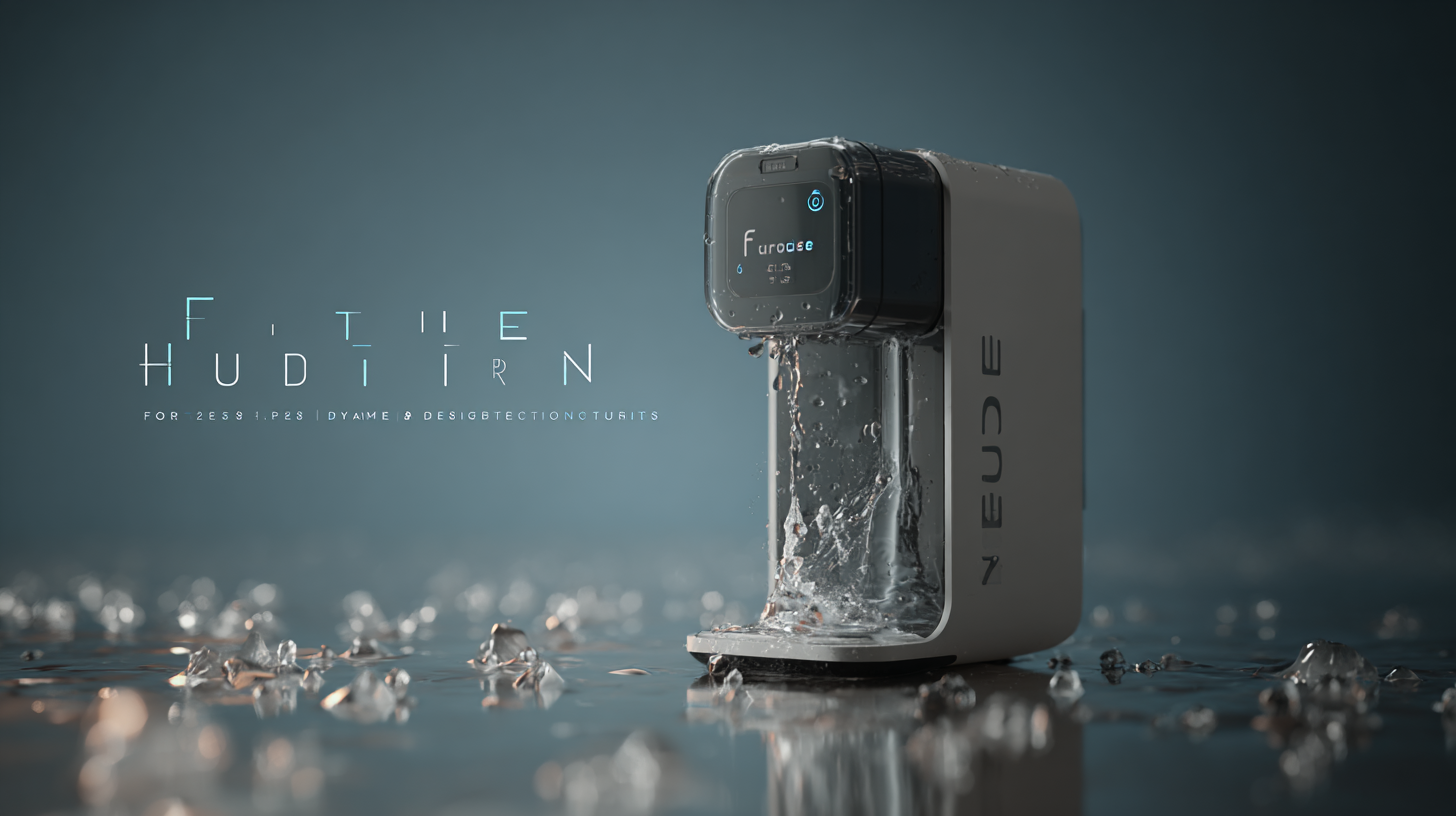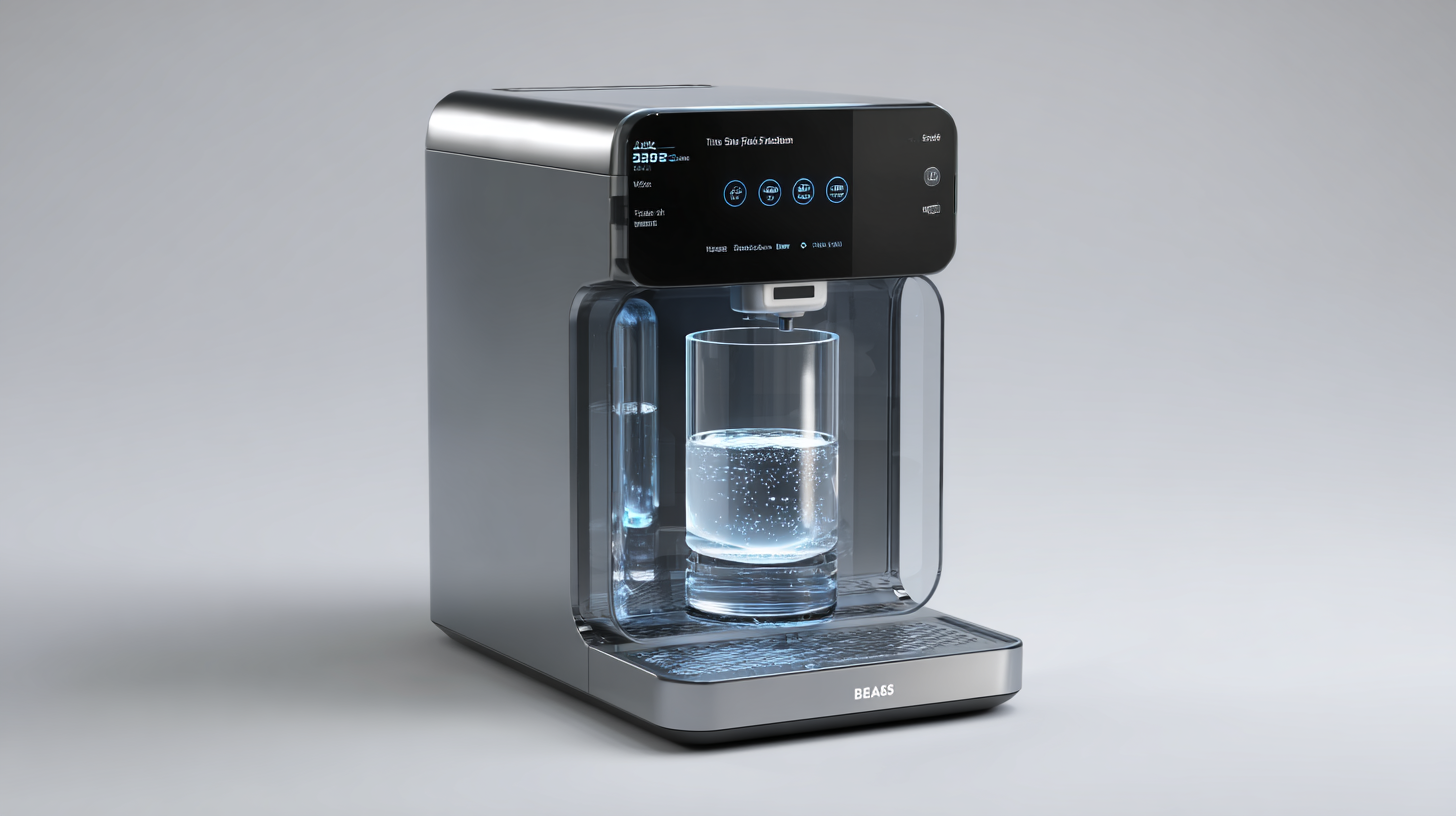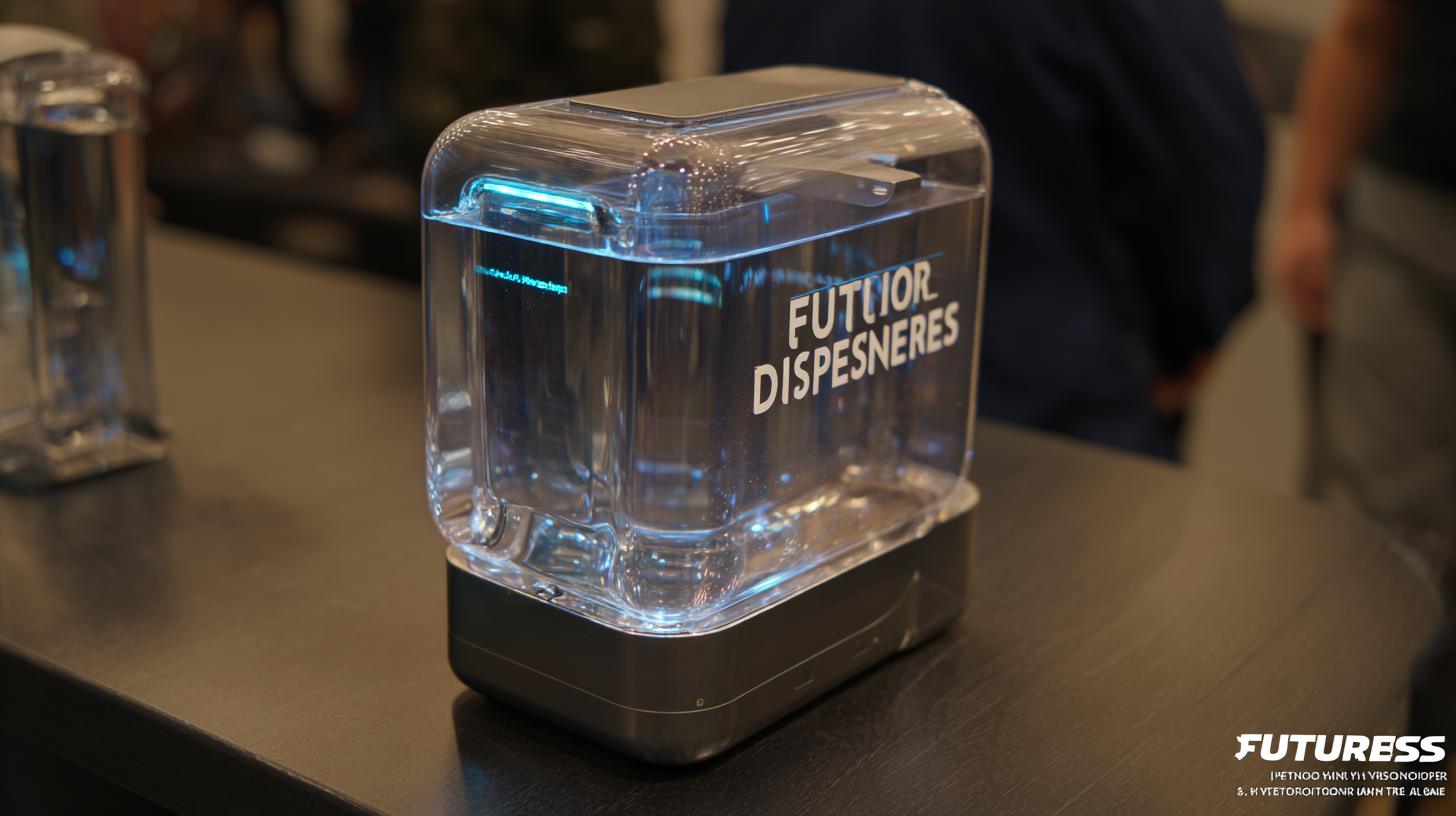
Future of Hydration: Exploring the 2025 Tech Innovations Behind the Best Water Dispensers
 As we look towards 2025, the future of hydration is not only vital for health but also ripe with innovative technological advancements, particularly in water dispensers. According to a recent market analysis by Grand View Research, the global water dispenser market size is expected to reach USD 3.6 billion by 2025, highlighting a rising consumer demand for efficient and smart hydration solutions. With a significant shift towards sustainability and the integration of IoT (Internet of Things) technology, modern water dispensers are evolving to offer enhanced convenience, filtration, and connectivity features. This blog will explore the upcoming tech innovations that will redefine how we access and enjoy water, ensuring that hydration remains a priority in our daily lives. As the industry progresses, understanding these advancements will be crucial for both consumers and businesses aiming to stay ahead in a competitive market focused on health and efficiency.
As we look towards 2025, the future of hydration is not only vital for health but also ripe with innovative technological advancements, particularly in water dispensers. According to a recent market analysis by Grand View Research, the global water dispenser market size is expected to reach USD 3.6 billion by 2025, highlighting a rising consumer demand for efficient and smart hydration solutions. With a significant shift towards sustainability and the integration of IoT (Internet of Things) technology, modern water dispensers are evolving to offer enhanced convenience, filtration, and connectivity features. This blog will explore the upcoming tech innovations that will redefine how we access and enjoy water, ensuring that hydration remains a priority in our daily lives. As the industry progresses, understanding these advancements will be crucial for both consumers and businesses aiming to stay ahead in a competitive market focused on health and efficiency.
Innovative Materials: The Future of Eco-Friendly Water Dispenser Design
As we look toward 2025, the evolution of eco-friendly water dispenser design is set to redefine our hydration habits. Innovative materials, such as biodegradable plastics and recycled metals, are becoming essential in creating dispensers that not only meet consumer demands but also minimize environmental impact. According to a recent report from the Global Eco-friendly Materials Market, the demand for sustainable materials in the home appliance sector is projected to grow at a CAGR of 9.5% through 2025. This shift indicates a significant opportunity for brands to invest in green technology while appealing to environmentally conscious consumers.
A key focus for designers is integrating smart technology with sustainable materials. For instance, water dispensers equipped with smart sensors can monitor water quality and usage patterns, encouraging users to adopt eco-friendly habits. A study by the International Journal of Environmental Research found that smart water management systems could reduce waste by up to 30%.
Tips for choosing an eco-friendly water dispenser include looking for models made from recycled or biodegradable materials and those that offer energy-efficient features. Additionally, consider dispensers that utilize carbon filtration, which not only purifies water but also reduces plastic waste by promoting the use of refillable bottles. By opting for these innovative designs, consumers can enhance their hydration experience while supporting a healthier planet.
Future of Hydration: Water Dispenser Material Innovations (2025)
Smart Hydration Solutions: Integrating AI and IoT in Water Dispensing Technologies
As we look towards 2025, the integration of AI and IoT in water dispensing technologies is set to revolutionize how we approach hydration. A recent report from Allied Market Research forecasts that the smart water dispenser market will exceed $1.23 billion by 2026, growing at a CAGR of 8.5%. This growth is driven by an increasing demand for convenience and health monitoring features in households and workplaces. Smart dispensers equipped with sensors can track water consumption and provide real-time hydration analytics to users, ensuring they meet their daily hydration goals.
Additionally, the incorporation of AI enables these smart dispensers to learn user preferences over time, optimizing water temperature and flavor enhancements to provide a personalized hydration experience. According to a study by MarketsandMarkets, the IoT in the water industry is projected to reach $16.4 billion by 2024, demonstrating a robust trend towards connected solutions that simplify and improve our daily routines. With features like automated refills, leak detection, and integration with health apps, the future of hydration is not just about drinking water—it's about fostering a healthier lifestyle through intelligent, responsive technology.
Future of Hydration: Exploring the 2025 Tech Innovations Behind the Best Water Dispensers
| Feature | Description | Technology | Benefits |
|---|---|---|---|
| Smart Sensors | Automatically detect water levels and usage patterns. | IoT Technology | Prevents outages, timely refills, and efficient usage. |
| Mobile App Integration | Allows users to monitor and control water dispenser remotely. | AI and Cloud Computing | Convenient access, usage analytics, and reminders. |
| Self-Cleaning Technology | UV light and other methods to sanitize the dispenser. | Automated Cleaning Systems | Maintains hygiene and reduces manual cleaning effort. |
| Water Quality Monitoring | Tests for contaminants and reports water quality. | AI-Enhanced Sensors | Ensures safe drinking water and informed choices. |
| Energy Efficiency | Optimizes power usage automatically based on conditions. | Smart Energy Management | Reduces energy costs and environmental impact. |
Efficient Filtration: Revolutionary Technologies for Cleaner, Healthier Water
When considering a new water dispenser, understanding the cutting-edge filtration technologies available is crucial for ensuring cleaner and healthier drinking water. One standout innovation is the use of engineered nanomaterials specifically designed to remove heavy metals, which poses a significant risk to public health. These materials enhance water treatment efficiency, providing safer drinking water while addressing contamination concerns that traditional methods might overlook.
Additionally, portable reverse osmosis filtration systems offer practicality, especially for outdoor enthusiasts. These advanced systems ensure that you have access to safe water, no matter where your adventures take you. Investing in such technologies not only enhances your health but also supports a more sustainable future.
**Tips:**
1. Research the filtration capabilities of the water dispenser, looking for ones that reduce contaminants and heavy metals effectively.
2. Consider your lifestyle; for on-the-go hydration, portable filtration systems can make a big difference in ensuring safe drinking water.
3. Stay informed about new innovations in water purification as technology continues to evolve, offering smarter, safer solutions for hydration.

User-Centric Features: Enhancing Convenience and Accessibility in Water Dispensers
As we look toward 2025, the evolution of water dispensers is set to prioritize user-centric features that enhance convenience and accessibility. With growing awareness of hydration's importance, innovative designs are addressing the needs of busy lifestyles. Smart water dispensers are emerging, equipped with touchless technology that allows users to refill bottles without physical contact. This feature not only promotes hygiene but also streamlines the process for individuals in a fast-paced environment.
Additionally, improved filtration systems and customizable temperature settings cater to varying user preferences. Imagine a dispenser that not only provides chilled or hot water but also offers flavored or mineral-infused options at the touch of a button. With mobile app integration, users can monitor their water intake and receive reminders to stay hydrated, fostering a healthier lifestyle.
By focusing on these user-centric innovations, the future of hydration will be more accessible and tailored to individual needs, ensuring everyone can enjoy the benefits of staying properly hydrated.
Global Market Trends: China's Role in Shaping Future Water Dispenser Innovations
In recent years, the global water dispenser market has seen significant transformations, with China emerging as a critical player in shaping future innovations. Chinese manufacturers are leading the way with advanced technologies, such as smart temperature control and self-cleaning features, enhancing user experience and promoting healthier hydration habits. As China's economy continues to grow, its emphasis on sustainability and efficiency in water usage is expected to drive the design and functionality of water dispensers worldwide.
When choosing a water dispenser, consider options that promote energy savings and environmental benefits. Look for models with energy-efficient certifications and features that reduce plastic waste, like refillable water sources. Additionally, pay attention to the filtration systems, as many modern dispensers are equipped with advanced filtration technology that improves the taste and quality of the water, making it safer for consumption.
Another trend is the integration of smart technology into water dispensers. Devices that connect to mobile apps provide users with usage analytics, maintenance notifications, and even water quality alerts. By opting for a smart water dispenser, consumers can ensure optimal performance and stay informed about their hydration needs. Keep an eye on these trends, as China’s innovations will likely influence global standards in hydration technology.

